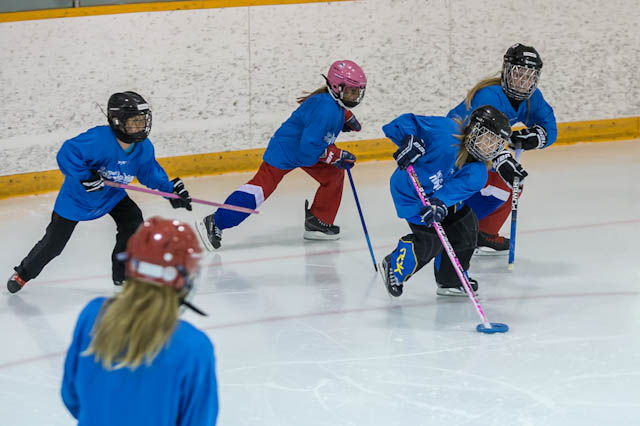By Lisa Brown
Q. This is sort of embarrassing, but I find that my players don’t listen to me as intently as I would like. What can I do?
A. When players don’t listen, this is a form of resistance.
I think that female players’ show resistance to being coached shows up in passive ways like lack of listening. (If you’re used to coaching men, you may be used to other forms of resistance…)
Ringette players resist being coached for many reasons, but a common one is they are being subtly pressured to do things the coach’s way.
Sometimes the coach is more invested in winning or playing the game properly than the players are. If you are putting in more effort and energy than they are towards the team and its performance, then the situation is out of balance. If you want them to invest more, then you must invest less.
When players aren’t listening, for whatever reason, stop talking (not in a hostile or pouty way). Try softer, not harder with them.
Speak less often; when you do speak, do not repeat yourself; control your desire to talk and keep it short and sweet. Also, make sure that the majority of what you have to say is positive and specific.
For example, “Kailee, I noticed you hustled back into the defensive end on that shift to make sure the triangle was there. Excellent job!”
Make 10-20 comments like that in a game… that’s all you need to do to get them to do what you want. This is much more effective than telling them what to do all game long (or before the game).
Females need encouragement to be aggressive (in a constructive way).
Boys are more naturally aggressive, but girls usually need it brought out in them with these types of comments. Without these compliments they may tend to play passively and resist pressure to improve.
The second reason they may not be listening is that what you are saying is not particularly inspiring.
Here are some guidelines to help yourself do a better job in your pre-game talk.
In your pre-game talk, give your players only ONE or TWO team goals, and make sure they are under the players’ control.
For example, don’t ask them to pick up their passes, or score 5 goals. Players cannot control whether they do either one (if they could, they’d pick up every pass and score 15 goals a game!).
Examples of goals under your athletes’ control include:
- following the breakout pattern you’ve practiced;
- cutting laterally across the blue line to receive the ringette ring;
- driving to the hot spot (the crease) before shooting;
- always having a triangle set up before the other team gets there.
If you give them more than one or two goals, this will make them anxious because they’ll forget them during the game. If you give them goals they cannot control, this will make them anxious because… they can’t control them. And, if your players are anxious, they will tighten up and make mistakes, which robs them of energy.
Also, stay away from goals that are vague, e.g., “skate hard” or “work hard.” If you want them to work harder during a game, then challenge them to do that at special times during it.
Ask a parent to keep stats on the suggested above goals and deliver these results back to the players after the game so they celebrate success.
They will understand that meeting the team goals leads to winning. This way you can link practices with game goals and get them more motivated in practice.



